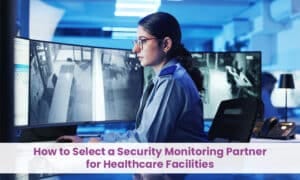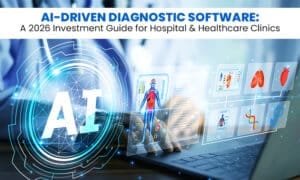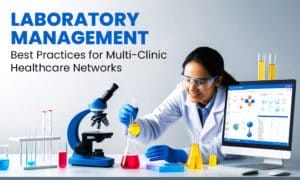
Healthcare providers compete not just on clinical expertise but also on how they deliver patient experience improvement. Patients today expect personalised, connected, and convenient services, just like they receive in retail, banking, or travel. Hospitals that fail to adapt risk losing patients to those who embrace digital transformation.
The right hospital management system software changes this landscape. Hospitals that implement modern HIMS (Hospital Information Management Systems) can move beyond traditional record-keeping to deliver patient engagement software-driven personalisation. This approach allows hospitals to design care journeys tailored to each patient’s needs, medical history, and preferences.
Personalisation is no longer a luxury. It defines the hospital’s reputation, compliance standards, and revenue growth. Let’s explore why every hospital must adopt a personalisation-first approach through HIMS and how it drives superior patient outcomes.
The Business Case for Personalised Hospital Management System Software
Executives and administrators face enormous pressure to maintain efficiency, compliance, and profitability. Yet, the real competitive edge lies in patient experience improvement. Here’s why:
Patients Expect Digital-first Services: Online scheduling, mobile records access, and real-time updates are now baseline expectations.
Retention Drives Revenue: Patients who receive personalised care return for follow-ups and recommend the hospital to others.
Regulatory Compliance Demands It: Standards like NABH and HIPAA highlight the need for patient-centred care.
Data-driven Care Reduces Risks: Personalised insights from HIMS help providers prevent errors and improve safety.
Hospitals that prioritise personalisation via hospital management system unlock both better care outcomes and stronger business performance.
How Hospital Management System Software Delivers Personalisation in Care
Unlike outdated legacy tools, HIMS centralises all patient data into a single platform that is accessible by doctors, nurses, and administrators. This unified structure ensures that every team member works with the same accurate, real-time information. As a result, personalisation becomes the standard, not the exception.
A 360-Degree View of the Patient with Real-Time Updates
Hospital management system software provides a holistic view of the patient by integrating lab results, medical history, prescriptions, and ongoing treatments. Real-time updates ensure that clinicians can make informed decisions instantly, improving both accuracy and responsiveness.
Impact of Real-Time 360° Patient View in HIMS
| Impact Area | Numerical Impact | Key Benefit |
| Medication Safety | 60% fewer near-miss medication events | Improved patient safety, reduced liability |
| Readmission Reduction | 18% fewer 30-day readmissions | Better discharge planning, lower costs |
| ED Wait Times | 22% shorter ED wait times | Faster triage, higher satisfaction |
| Duplicate Lab/Radiology Orders | 49% fewer duplicate lab orders, 40% fewer radiology orders | Reduced costs and unnecessary testing |
| Duplicate Imaging | 5 percentage-point reduction in duplicate imaging | Saves resources, prevents repeat scans |
| Data Exchange Adoption | Hospitals adopting full data exchange: 46% (2018) → 70% (2023) | More complete 360° patient view |
A 360-degree patient view with real-time updates in hospital management software offers measurable benefits. Analytics in HIMS reduce near-miss events by 60%, lower readmissions by 18%, and shorten emergency wait times by 22%.
Duplicate lab and imaging tests drop significantly, saving costs and avoiding delays. With interoperability adoption rising from 46% to 70%, hospitals gain more complete patient profiles. These improvements drive safer care, optimise resources, and enhance overall patient experience improvement.
Predictive Analytics to Anticipate Needs Before They Arise
Built-in analytics within HIMS track patient patterns and predict potential health risks. This proactive approach allows hospitals to deliver preventive care, reducing complications and elevating patient outcomes through data-driven personalisation.
Omni-Channel Engagement Through Portals, SMS, WhatsApp, or Telehealth
Patient engagement software inside HIMS ensures patients stay connected. Whether through SMS reminders, WhatsApp notifications, or telehealth consultations, hospitals can maintain continuous, personalised communication with patients.
Decision-Making Support That Reduces Human Errors
By centralising data and offering AI-backed suggestions, hospital management system software empowers staff with decision-support tools. This reduces the risk of errors while enabling precise, patient-specific care pathways.
7 Ways Hospital Management System Software Powers Personalisation for Patient Experience Improvement
1. Smart Appointment Scheduling and Faster Admissions
Delays and long queues frustrate patients. With hospital management system , hospitals automate scheduling, send reminders, and provide real-time updates. Patients choose convenient slots and avoid unnecessary waiting. Bed allocation modules inside HIMS ensure faster admissions, leading to patient experience improvement from the very first interaction.
2. Personalised Treatment Plans Through Integrated Data
HIMS integrates lab results, radiology, prescriptions, and historical records. Physicians create personalised treatment plans based on complete data. For example, a diabetic patient receives customised dietary recommendations along with medication reminders through patient engagement software. This ensures holistic and targeted treatment pathways.
3. Patient Engagement Software for Better Communication
Effective communication strengthens trust. Patient engagement software embedded in HIMS gives patients access to their reports, appointments, and prescriptions. Hospitals send updates via secure apps, SMS, or email. Patients feel empowered because they remain informed and connected at every step. This engagement builds loyalty and long-term trust.
4. Using HIMS Workflow Automation to Reduce Wait Times
Hospitals that rely on manual processes waste valuable time. HIMS workflow automation streamlines billing, insurance verification, discharge planning, and report delivery. Patients no longer wait hours for documents or approvals. Quick workflows translate into higher patient satisfaction and smoother operations for hospital staff.
5. Data Analytics in HIMS for Customised Care
Data drives personalisation. Hospital management system software uses analytics to predict health risks, monitor progress, and suggest proactive interventions. For instance:
- Predictive alerts help identify patients at risk of readmission.
- Dashboards show hospital leaders patterns in patient satisfaction scores.
- Personalised alerts remind patients about vaccinations or routine screenings.
These insights push hospitals toward patient experience improvement while reducing long-term costs.
6. Seamless Provider-Patient Communication Across Channels
Modern hospital management system software integrates chat, email, and mobile notifications into one platform. Patients never feel left out because doctors and staff respond promptly through unified dashboards. Automated follow-up reminders ensure compliance with treatment plans. Continuous communication enhances outcomes and builds confidence in hospital services.
7. Continuous Feedback and Experience Tracking
Patient feedback drives service excellence. HIMS collects patient ratings through apps, portals, or SMS. Administrators view dashboards that highlight problem areas like delays, billing confusion, or clinical interactions. Hospitals act quickly to fix these issues, ensuring continuous patient experience improvement.

Ways to Improve Patient Experience Through Hospital Software
Hospitals today recognise that patient experience improvement is as important as clinical outcomes. By leveraging hospital management system software, healthcare providers can enhance satisfaction and trust while also streamlining operations. Innovative digital tools within HIMS make the hospital journey smoother, faster, and more transparent. Here are four effective ways hospitals can transform patient interactions using technology.
• Introduce Self-Service Kiosks for Check-Ins
Self-service kiosks reduce waiting time by allowing patients to check in, update personal details, and even make payments without standing in long queues. These kiosks, connected to HIMS, improve operational flow and give patients greater control over their hospital visit, creating a more efficient and stress-free experience.
• Provide Transparent Billing Systems with Zero Hidden Charges
Patients often get frustrated with unexpected costs. A modern hospital management system software provides real-time billing updates, detailed cost breakdowns, and cashless payment options. Transparent billing builds patient trust and demonstrates the hospital’s commitment to ethical practices.
• Enable Teleconsultation Through HIMS Integrations
Integrating telemedicine within HIMS allows patients to connect with doctors remotely. This feature improves accessibility, especially for follow-ups, elderly patients, or those living in remote areas. Hospitals that offer teleconsultation expand care beyond their physical boundaries, enhancing patient convenience.
• Use AI Chatbots to Resolve Routine Patient Queries Instantly
AI-powered chatbots integrated with patient engagement software answer common queries such as appointment slots, lab results, or doctor availability. Patients receive instant responses, reducing dependency on front-desk staff and improving responsiveness.
Together, these digital enhancements highlight that hospitals value their patients’ time, safety, and comfort, leading to lasting satisfaction.
Using HIMS to Reduce Patient Wait Times and Increase Satisfaction
Long wait times remain one of the biggest sources of frustration for patients in hospitals. Hospital Information Management Systems (HIMS) address this challenge by streamlining workflows and optimising resources. Through digital queue management, patients can view their position in real time, reducing uncertainty and improving transparency.
Automated notifications keep patients updated about test results, consultation schedules, and next steps, which minimises anxiety and helps them plan their time better. By keeping patients informed at every stage, hospitals create smoother and more efficient care journeys.
Beyond patient-facing benefits, HIMS also enhances internal hospital operations. Predictive staffing models within the system analyse patient inflow patterns and allocate the right number of doctors, nurses, and support staff during peak hours. This proactive approach ensures that hospitals avoid bottlenecks, reduce idle time, and improve service delivery. The result is not only reduced wait times but also measurable patient experience improvement across the care continuum.
How Hospitals Use Data Analytics in HIMS to Customise Care
Modern hospital management system software equipped with data analytics enables hospitals to move beyond one-size-fits-all healthcare. By analysing patient data, operational workflows, and feedback, hospitals transform care delivery into a personalised experience. Analytics within HIMS help administrators and clinicians identify patterns, predict risks, and take proactive measures that directly contribute to patient experience improvement.
Risk Stratification
Data analytics in HIMS allows hospitals to identify patients who are at higher risk of developing chronic conditions such as diabetes, hypertension, or cardiovascular disease. By analysing medical history, lifestyle data, and current health indicators, hospitals design preventive care plans tailored to each patient. This not only reduces costly hospitalisations but also improves long-term outcomes.
Preventive Outreach
With predictive insights, hospitals use HIMS to send proactive reminders for screenings, vaccinations, or wellness programs. For example, a patient due for a mammogram or flu shot receives a timely notification through patient engagement software. Preventive outreach ensures patients stay on top of their health, reducing complications and boosting trust in the hospital.
Targeted Communication
Hospitals leverage analytics to deliver campaigns designed for specific demographics or health conditions. A cardiac health awareness program can target individuals with family histories of heart disease, while lifestyle modification programs may focus on pre-diabetic patients. Such targeted communication ensures messaging is relevant and impactful.
Operational Metrics
Beyond clinical care, analytics in hospital management system software tracks operational performance. Hospitals monitor bed occupancy, staff utilisation, and patient feedback to optimise efficiency. These insights reduce delays, allocate resources effectively, and enhance overall service delivery.
By leveraging data analytics in HIMS, hospitals shift from reactive responses to proactive, customised care, fostering long-term loyalty and better patient experiences.

Why Personalisation Through Hospital Management System Software is the Future
Healthcare is rapidly shifting toward value-based care, where outcomes and patient satisfaction define success. Modern patients demand services tailored to their unique needs, and hospital management system software enables this shift by integrating data, streamlining communication, and automating workflows. Hospitals that leverage personalisation through HIMS are not only meeting patient expectations but also aligning with global healthcare trends such as digital-first hospitals and patient-centred models.
Higher Patient Satisfaction Through Tailored Services
When hospitals use HIMS to personalise care, patients receive reminders, treatment plans, and follow-ups designed for their specific conditions. This individualised approach makes patients feel valued and cared for, resulting in stronger trust and loyalty.
Compliance Readiness with NABH, HIPAA, and ISO Guidelines
Compliance is critical for accreditation and reputation. Hospital management system helps maintain secure data, audit trails, and transparent workflows, ensuring hospitals remain compliant with global healthcare regulations.
Operational Efficiency Through Reduced Waste and Improved Workflows
Automation inside HIMS eliminates redundant processes, minimises delays, and optimises staff utilisation. This efficiency reduces costs while improving care delivery speed.
Revenue Growth by Retaining Patients and Attracting New Ones
Satisfied patients return for future care and recommend the hospital to others. Personalisation powered by HIMS builds loyalty, enhances reputation, and drives sustainable revenue growth.
Building Smarter Hospitals with HIMS Personalisation
Healthcare’s future depends on personalisation. Patients expect convenience, proactive communication, and care designed for their unique needs. By implementing hospital management system software and integrating patient engagement software, hospitals achieve patient experience improvement at every stage of the journey.
From shorter wait times to AI-driven insights, HIMS ensures hospitals meet rising expectations and regulatory requirements while boosting efficiency. Hospitals that invest in personalisation today will lead tomorrow—earning loyalty, reputation, and sustainable growth in 2025 and beyond.





